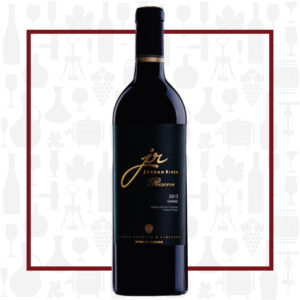Cellar Profile
The vineyards of family-owned Jordan River Wines are located on the Mafraq Plateau, on a mountain 80 km north of Amman. This is a holy site to the Abrahamic religions and the World Heritage site of Umm El-Jimal. The iron-rich, organically-poor soil sits upon a massive basalt slab that makes the vines work feverishly to reach the water table. Jordan is ranked as the 3rd most water poor country on earth and the region receives scant rainfall during the dry summers. However, the adjacent Massive Jabal Al-Arab glacier feeds glacial melt into 400-metre-deep aquifers that sustain the vineyards. 330 sunny days per year, on average, allow for full phenolic ripeness in the skins. These grapes are grown at elevation (almost 3000ft), with huge diurnal temperature shifts that impart freshness and acidity in the wines produced. Over 45 different Italian, French and Spanish varieties are planted.
Region
Located on a remarkable landscape atop the Mafraq Plateau, at an altitude of 840 meters. At some point in antiquity, an extinct volcano (Jabal-Al-Arab) poured out fields of basaltic lava over the Mountain Heights Plateau, an area that is Jordan’s most fertile region. The Jordanian climate, with over 330 sunny days yearly, coupled with dry summers and constant breezes, is ideal for grapes and vines. Vast diurnal shifts between day and nighttime temperatures allow the vines to rest, which enhances the characteristics and retains balance of the varieties.
Vineyard
Over 40 types of world-renowned vines, of the best quality, thrive in the mineral rich volcanic soil of the Basalt Desert. Not knowing what works in Jordan, all forty are growing in this ideal mixture, ultimately producing elegant wines. The rain and melting snow, flowing off the 1800m-high Jabal Al-Arab, travels under the volcanic desert surface and accumulates in 400-meters deep aquifers. This water is brought to the surface and used to supply the 120 hectares of ‘dry-farmed’ vineyards.
Varieties
Syrah is grown throughout the world, producing beautifully diverse and interesting wines. It was found to be the offspring of two obscure grapes from southeastern France, Dureza and Mondeuse Blanche. The style and flavour profile of Syrah is greatly influenced by the climate in which the grapes are grown. Moderate climates, such as the northern Rhône Valley and parts of the Walla Walla AVA in Washington State, tend to produce medium- to full-bodied wines with medium to high levels of tannins and notes of blackberry, mint and black pepper. In hot climates, Syrah is more consistently full-bodied with softer tannins, jammier fruit and spice notes of licorice, anise and earthy leather. Syrah can ripen quickly – frequently before flavour compounds have fully developed – so it is best to have longer, more temperate growing seasons. The long, moderate days and cool evenings of the Mafraq Plateau allow for long hang times, perfect for fully developed grapes.
Winemaking
Hand-harvested fruit is berry selected, then crushed into stainless steel for a long slow maceration and fermentation using selected yeasts. The wine is transferred into new French oak barrels for malolactic conversion and one year of aging, before being bottled unfiltered.
Tasting Notes
Varietally typistic aromas of black plum, anise, cola and white pepper. The palate is fresh, with soft, evolved tannins. On the palate, you’ll find black plum, baking chocolate, cassis and a hint of herbaceousness or garrigue. The finish is long, with a hint of sweet vanilla. Serve at cellar temperature with lamb kebabs, braised beef or creamy black truffle pasta.

 info@buyersandcellars.ca
www.buyersandcellars.ca
info@buyersandcellars.ca
www.buyersandcellars.ca